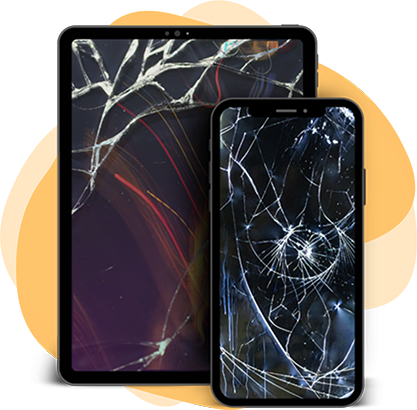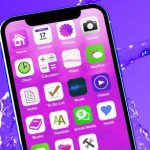No products in the cart.
How To Transfer Data To A New iPhone
Transferring data from your old iPhone to a new iPhone or iPad is an essential step in setting up your new device. Whether you have upgraded your phone or are switching to an iPad, understanding the transfer process ensures that all your important information is seamlessly moved. This article will guide you through the various methods available to transfer your data, such as using iCloud, iTunes, or the Quick Start feature, making your transition smooth and efficient.

Understanding the Transfer Process
The transfer process is vital when you want to transfer data from your previous device to your new iPhone or iPad. It involves several steps to ensure that all your important information is correctly copied over. Knowing the different methods, such as Quick Start and iCloud backup, can help you choose the most suitable option for your needs. Each method has its advantages, and being familiar with them will make setting up your new iOS or iPadOS device much easier.
Importance of Transferring Data
Transferring data is crucial for maintaining continuity in your daily activities. When you set up your new iPhone or iPad, you want to ensure that your contacts, messages, photos, and apps are readily available. By using iCloud to transfer data, you can easily retrieve all your previous data from your old iPhone, making it feel like home. This seamless transition allows you to enjoy your new device without losing any important information, which is why understanding the importance of data transfer cannot be overstated.
Types of Data You Can Transfer
When moving from your old iPhone to a new iPhone or iPad, several types of data can be transferred. This includes your apps, photos, contacts, messages, and even your settings. Utilizing iTunes or iCloud backup ensures that all your important files are securely stored and easily retrievable. Moreover, using Quick Start allows for direct transfers, ensuring that your new device is set up with the latest data from your previous iOS or iPadOS device. Identifying the types of data you want to transfer will streamline the process and enhance your experience with your new device.
Preparing Your Old iPhone for Transfer
Preparing your old iPhone for the transfer process is a crucial step in ensuring a successful migration of your data. Start by backing up your old device to iCloud or iTunes, which will serve as a safety net for your information. Additionally, ensure that your Apple ID is active and that you are connected to a stable Wi-Fi network to facilitate the transfer process. Once you turn on your new iPhone, following the prompts will help you use Quick Start to transfer data directly from your old iPhone to your new device, ensuring a smooth setup experience.


Not Sure About A Repair You Need?
Whether you’re dealing with a cracked screen, battery issues, or software glitches, we’ve got you covered. Get a FREE quote today!
Using Quick Start to Transfer Data
What is Quick Start?
Quick Start is an innovative feature designed by Apple to simplify the process of transferring data from your previous iOS or iPadOS device to your new iPhone or iPad. This method allows you to transfer your data directly, bypassing the need for a lengthy iCloud backup or iTunes synchronization. When you turn on your new device, Quick Start leverages your old iPhone’s proximity to initiate a seamless transfer. By using Wi-Fi and Bluetooth, Quick Start effortlessly copies your settings, apps, and other essential data, helping you set up your new iPhone or iPad in just a few minutes, ensuring that you can start using your new device with ease.
Step-by-Step Guide to Using Quick Start
To use Quick Start to transfer data from your old iPhone to a new iPhone or iPad, begin by ensuring both devices are updated to the latest iOS or iPadOS version. Place your old iPhone next to your new device and turn on your new iPhone. You will see a prompt on your old device asking if you want to set up your new iPhone. After confirming, you can scan the animation displayed on your new device with your old iPhone. Follow the on-screen instructions to complete the setup and transfer your data. This process allows you to transfer your data directly and securely, making it an ideal choice for those who want to transfer data quickly without missing a step in the setup process.

Troubleshooting Common Quick Start Issues
While Quick Start is designed to simplify the data transfer process, you may encounter some common issues. If you experience problems, first ensure both devices are charged and within close proximity, as distance can disrupt the connection. A stable Wi-Fi network is essential, so check your internet connection. If Quick Start fails to recognize your old device, restarting both devices can resolve many connectivity issues. Additionally, ensure that your Apple ID is active and that Bluetooth is enabled. If problems persist, consider using iCloud to transfer your data as a backup option, ensuring that you can still successfully set up your new iPhone or iPad without losing any important information.
Transferring Data Using iCloud
Setting Up iCloud Backup on Your Old iPhone
To effectively transfer data from your previous device, you must first set up iCloud backup on your old iPhone. Begin by connecting to a stable Wi-Fi network, ensuring that your Apple ID is signed in. Navigate to Settings, tap on your name, and select iCloud. From there, enable iCloud Backup and tap “Back Up Now.” This process may take some time depending on the amount of data you want to transfer. Once complete, your data will be securely stored in iCloud, ready for restoration on your new iPhone or iPad.

Restoring iCloud Backup on Your New iPhone
After you have successfully set up your new iPhone, restoring your iCloud backup is the next crucial step. During the initial setup process, when prompted, select “Restore from iCloud Backup.” Sign in with your Apple ID and choose the most recent backup from your old iPhone. This restoration will transfer your data to your new device, including apps, settings, and personal files, ensuring that you can enjoy a seamless transition to your new iOS or iPadOS device. Make sure your new device remains connected to Wi-Fi to facilitate the transfer process effectively.
Benefits of Using iCloud for Data Transfer
Utilising iCloud for data transfer offers numerous advantages. First and foremost, it simplifies the process by allowing you to transfer data without needing a computer or additional cables. iCloud ensures that your information is securely backed up in the cloud, providing peace of mind. Moreover, the ability to restore your data directly from iCloud means you can set up your new iPhone or iPad quickly. Additionally, iCloud’s automatic backup feature ensures that your data remains up-to-date, allowing you to effortlessly manage your transition between devices.
Using iTunes or Finder for Data Transfer
Backing Up Your Old iPhone with iTunes or Finder
For those who prefer a more traditional method, backing up your old iPhone with iTunes or Finder is an effective option. Connect your old iPhone to your computer using a USB cable. Open iTunes (or Finder for macOS Catalina and later), select your device, and click “Back Up Now.” This process will create a complete backup of your old device, including apps, settings, and files. Make sure to keep your device connected until the backup is complete, allowing you to transfer data to your new iPhone with ease and reliability.
Restoring Data to Your New iPhone
Once you have backed up your old iPhone using iTunes or Finder, you can proceed to restore the data to your new iPhone. Connect your new device to the same computer and open iTunes or Finder. Select your new iPhone and choose the “Restore Backup” option. From the list of backups, select the most recent one from your old iPhone. This process will transfer your data to your new iPhone, making it easy to continue using your apps and settings just as you did with your previous device.

Advantages and Disadvantages of iTunes/Finder Method
The iTunes or Finder method for data transfer comes with its own set of advantages and disadvantages. One major advantage is that it allows for a complete backup of your data, ensuring nothing is left behind. Additionally, this method does not require an internet connection, making it ideal for users with limited data access. However, a notable disadvantage is the need for a computer, which may not be convenient for everyone. Furthermore, the process can be time-consuming, especially for larger backups, which can be a drawback for users wanting a quick setup for their new iPhone or iPad.
Additional Methods to Transfer Data
Using Third-Party Applications
In addition to Apple’s native methods, several third-party applications can facilitate the transfer of data from your old iPhone to a new iPhone or iPad. These applications often provide enhanced features, such as selective transfer, which allows you to choose specific data types like messages, contacts, or photos. Popular options include MobileTrans and AnyTrans, which support direct transfers between devices without requiring cloud backup. Utilising these applications can streamline your data transfer process, offering flexibility and efficiency that may suit your preferences when setting up your new device.
Transferring Data via a Mac or PC
Transferring data via a Mac or PC remains a reliable method for users who prefer a wired connection. Connecting your old iPhone to the computer allows you to use iTunes or Finder to create a backup of your previous device. Once the backup is complete, connect your new iPhone, and you can restore the data directly from the backup. This process ensures that all your essential files, apps, and settings are transferred seamlessly to your new iPhone or iPad, making it an ideal choice for users who want control over their transfer process.
Comparing Different Transfer Methods
When looking to transfer data from your old iPhone to a new iPhone or iPad, comparing different methods is essential to determine the best fit for your needs. Quick Start offers a fast, wireless option, while iCloud provides the convenience of cloud backup, ensuring your data is securely stored. On the other hand, using iTunes or third-party applications may appeal to those who prefer a wired connection. Each method has unique advantages and potential drawbacks, so understanding these will help you make an informed choice in setting up your new iOS device.


Don't Let A Broken Phone Hold You Back
Look no further! Our comprehensive price list covers all major brands and models, ensuring that you can easily find the repair cost for your specific phone. Pleas check our price list for details
Getting Help from Apple Support
When to Contact Apple Support
There may be instances when you encounter challenges while trying to transfer data to a new iPhone or iPad, prompting the need to contact Apple Support. If you experience issues such as incomplete transfers, problems with iCloud backup, or Quick Start failures, reaching out for assistance can be invaluable. Additionally, if you’re unsure about the process or require help with data recovery, Apple Support can provide expert guidance tailored to your situation, ensuring a smoother transition and resolution of any technical difficulties you may face.
Resources for Troubleshooting Data Transfer Issues
Apple offers various resources to help you troubleshoot data transfer issues effectively. The official Apple Support website provides detailed guides and articles on common problems encountered while transferring data. Furthermore, community forums allow users to share their experiences and solutions. Utilising these resources can help you resolve issues related to your Apple ID, Wi-Fi connectivity, or data restoration from iCloud or iTunes, ensuring you have the support you need to successfully set up your new iPhone or iPad without losing any important information.

Best Practices for Data Transfer
In conclusion, transferring data from your old iPhone to a new iPhone or iPad can be done efficiently by following the right methods and best practices. Whether you choose to use Quick Start, iCloud backup, or a wired connection via iTunes, ensure that you prepare your devices adequately. Always back up your old iPhone first, confirm that your Apple ID is active, and maintain a stable Wi-Fi connection during the process. By adhering to these guidelines, you can successfully transfer your data to a new iPhone or iPad and enjoy a seamless experience with your new device.
If at any point during the transfer process you run into trouble don’t hesitate to reach out for help. You can contact us or check our pricelist for further details.

Book Online &
Save $10 on Your Mobile Phone Repair
By booking online, you get an exclusive $10 discount on your repair cost. Don’t miss out on this special offer!
Frequently Asked Questions
The best way to transfer data to a new iPhone or iPad is to use the Quick Start feature, which allows you to set up your new device using your previous iPhone directly.
es, you can transfer data from your old iPhone to your new iPhone using iCloud by backing up your old phone and then restoring that backup on your new device.
The three ways to transfer data to a new iPhone include using Quick Start to transfer directly from your previous iPhone, using iCloud for an online backup, or using a Mac to transfer via Finder.
When using Quick Start or transferring directly from your previous device, you will need to wait for the transfer to complete, which can take several minutes depending on the amount of data being moved.
Yes, you can transfer all of your data, including apps and purchased content, from your old iPhone to your new iPhone using a Mac by connecting both devices and using Finder to initiate the transfer.
What should I do if I want to transfer data from my old iPhone to a new iPhone using iCloud storage?
To transfer data from your old iPhone to a new iPhone using iCloud storage, first create a backup of your old iPhone in iCloud. Then, during the setup of your new iPhone, tap ‘Restore from iCloud Backup’ and choose the backup you just created.
No, transferring data directly from your previous iPhone to your new iPhone requires a Wi-Fi connection to establish the Quick Start setup, so ensure that both devices are connected to the same network.
You can transfer various types of content from your old iPhone, including apps, photos, videos, contacts, messages, and other data and purchased content to your new device.
To ensure that all of your data from your old iPhone is transferred, you should choose a comprehensive transfer method such as Quick Start, which allows you to transfer directly from your previous device, or use a full iCloud backup and restore process.
If you experience issues while trying to transfer data to your new iPhone, you can troubleshoot by checking your Wi-Fi connection, ensuring both devices are updated to the latest iOS version, or trying an alternative transfer method such as using a Mac or iCloud.






